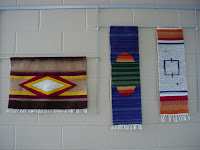
 Grove Music Online has been the leading online resource for music research since its inception in 2001, a glorious compendium of music scholarship offering the full texts of The New Grove Dictionary of Music and Musicians, 2nd Edition (2001), The New Grove Dictionary of Opera (1992), and The New Grove Dictionary of Jazz, 2nd Edition (2001), as well as all subsequent updates and emendations. Including 50,000 signed articles and 28,000 biographies contributed by over 6,000 scholars from around the world, Grove Music Online is the unsurpassed authority on all aspects of music.
Grove Music Online has been the leading online resource for music research since its inception in 2001, a glorious compendium of music scholarship offering the full texts of The New Grove Dictionary of Music and Musicians, 2nd Edition (2001), The New Grove Dictionary of Opera (1992), and The New Grove Dictionary of Jazz, 2nd Edition (2001), as well as all subsequent updates and emendations. Including 50,000 signed articles and 28,000 biographies contributed by over 6,000 scholars from around the world, Grove Music Online is the unsurpassed authority on all aspects of music.The New Grove Dictionary of Music and Musicians, edited by Stanley Sadie and John Tyrrell, has been widely acclaimed as an indispensable resource and a classic reference. For the 2001 Second Edition, every one of the first edition's 22,500 articles was reviewed and revised, with thousands of articles expanded. Previously neglected or under-represented areas were examined, explored, and explained. Movements and topics once deemed too controversial or too far from the mainstream were added along with extensive, authoritative contributions on non-Western music.
The New Grove Dictionary of Jazz, Second Edition, edited by Barry Kernfeld, is the largest, most comprehensive and accurate reference work on jazz ever published, putting the world of jazz at your fingertips. With articles on every aspect of the field, from jazz groups, composers and arrangers to instruments, terms, record labels and venues, it is the ideal companion for scholars and enthusiasts in this rapidly growing field.
The New Grove Dictionary of Opera, edited by Stanley Sadie, is unsurpassed in its scope and quality, with contributions from over 1,300 of the world's leading critics and scholars. A remarkable 11,000 articles, all fully cross-referenced, create a work that has become established as the essential opera reference. Indeed, every aspect of this varied art form is covered: composers, conductors, directors, performers, librettists, literary sources, cities and countries, operatic historians, and opera genres and terminology.
Now the cornerstone of Oxford Music Online, a subscription to Grove Music Online also includes The Oxford Companion to Music (2002), which offers more than 8,000 articles on composers, performers, conductors, individual works, instruments and notation, forms and genres; The Oxford Dictionary of Music, Second Edition, Revised (2006) will similarly supplement Grove's more extensive coverage with content geared toward undergraduates and general users. In addition, a robust, new linking program features improved and expanded links to sound examples via partnerships with Classical Music Library and DRAM, as well as links to the RILM database of music bibliography. Grove Music Online articles also feature biographical linking to the Oxford Dictionary of National Biography for mutual subscribers to both, and a host of tools and resources, including timelines and topical guides.








